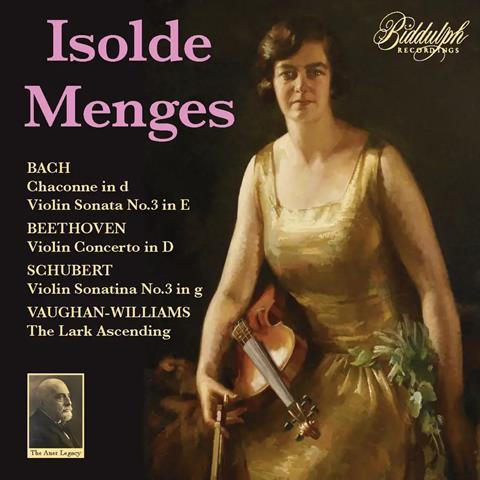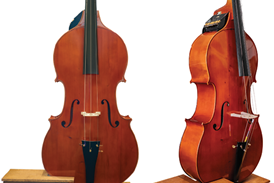A great British violinist is celebrated in fitting style

The Strad Issue: October 2024
Description: A great British violinist is celebrated in fitting style
Musicians: Isolde Menges (violin) Harold Samuel, Eileen Beattie, Charlton Keith and Arthur de Greef (piano) Royal Albert Hall Orchestra/Landon Ronald; orchestra/Malcolm Sargent
Works: Bach: Solo Violin Sonata BWV1001 – Fugue; Partita BWV1004 – Chaconne; Violin Sonata BWV1016. Beethoven: Violin Concerto. Handel: Violin Sonatas op.1: no.3, no.13. Schubert: Violin Sonata D408 Vaughan Williams: The Lark Ascending; works by Bach, Brahms, Chopin, Elgar, Falla, Hubay, Schubert, Stanford and Wieniawski
Catalogue number: BIDDULPH 85047-2 (2 CDs)
In 1993 Biddulph issued a CD of Isolde Menges (1893–1976) playing sonatas by Beethoven and Brahms with Arthur de Greef and Harold Samuel. I hope we shall not have to wait three decades for its next disc of this great but neglected British violinist. This fine set takes in recordings from 1916 to 1930.
The headline is the first complete recording of the Beethoven concerto (Joan Manén’s was cut). If I say that Menges is the best interpreter of this concerto among the Auer pupils, I suppose I shall provoke shock and horror, but I am going to say it. This exceptional Beethoven interpreter, later famed for her performances of the quartets, is even more naturally at home in this music than Milstein and leaves the others trailing in her wake. The first movement, with Joachim’s cadenza, is beautiful; the Larghetto has depth, lacking only the ultimate intensity of Busch or Kogan; and the finale has welcome touches of wit. The acoustic 1923 sound has strange timpani at the start but the orchestra plays well for Landon Ronald.
Read: Who was violinist Isolde Menges?
Read: The Strad Calendar 2023: 1714 Guarneri ‘filius Andreae’ violin
Book review: Pioneer Violin Virtuose in the Early Twentieth Century
The Lark Ascending, also a first recording (1928), should have gone to Marie Hall but HMV never made electrical discs with her. Menges plays well but Sargent and his studio band are all at sea – Hugh Bean and Boult still rule.
Bach’s E major Sonata with the inimitable Samuel has exactly the right atmosphere in the first movement, real Innigkeit in the third; rhythm is delightful in the second and the finale is as light as thistledown. Two dated Bach arrangements are shown up by the G minor Solo Sonata’s Fugue, almost as if Menges is suddenly off the leash (Busch in 1934 has the advantage of a live performance, without having to stop and restart). The Chaconne from the D minor Partita is quite expressive, with tempo changes but moments of inwardness (again Busch, at a similar basic tempo, has the edge, almost spinning off into outer space).
Two Handel sonatas are elegant, with lovely trills: opening movements are serene, slow ones thoughtful, faster movements splendidly rhythmical. In Schubert’s G minor Sonata, Menges is irreproachably buoyant, but at times de Greef dons his hobnail boots.
The short pieces often let Menges demonstrate her superb technique, yet she is always musical. I am fond of Stanford’s ‘Leprechaun’s Dance’, with Eileen Beattie’s piano, which was the filler for The Lark Ascending.
There is plenty more for another volume, including obbligati for Elisabeth Schumann and other famous singers. Biddulph’s track list has errors.
TULLY POTTER









































No comments yet